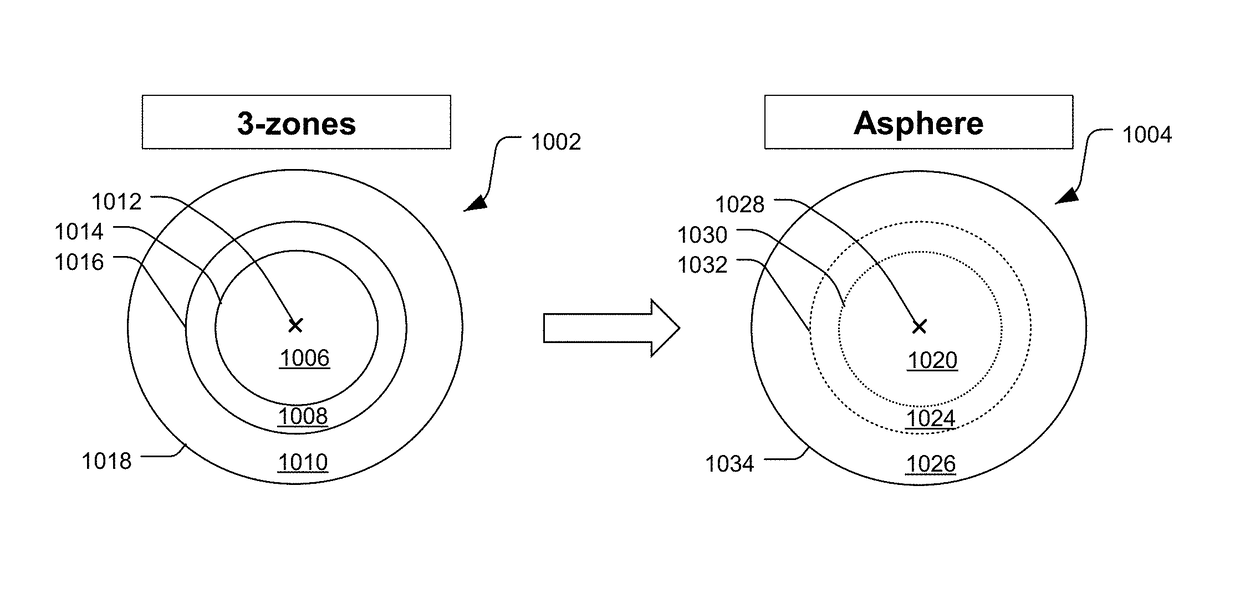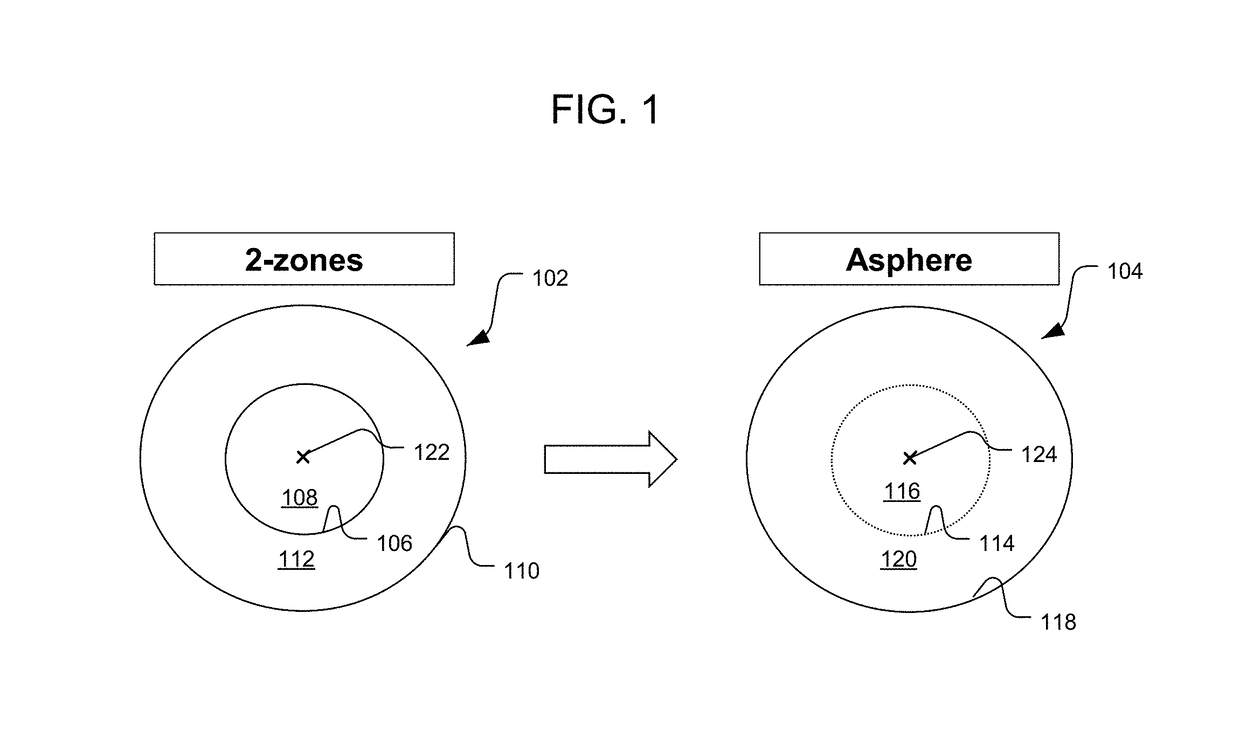Progressive power intraocular lens, and methods of use and manufacture
a technology of progressive lens and intraocular lens, applied in intraocular lens, optics, instruments, etc., can solve the problems of visual artifacts, glare, halos, decreased contrast sensitivity, etc., to avoid or reduce side effects, improve optical performance, and avoid the effect of best focus shift and contrast sensitivity loss
- Summary
- Abstract
- Description
- Claims
- Application Information
AI Technical Summary
Benefits of technology
Problems solved by technology
Method used
Image
Examples
Embodiment Construction
[0046]Embodiments herein disclosed relate to lenses having refractive power-progressive profiles, e.g., lenses having a refractive aspheric profile that provides a continuous power progression to extend depth of focus (EDF). Some embodiments herein disclosed relate to lenses having refractive power-progressive profiles in conjunction with diffractive profiles, which provide improved depth of focus to a patient. According to some embodiments, a diffractive lens can partially correct for ocular chromatic aberration.
[0047]Embodiments of lenses herein disclosed can be configured for placement in the eye of a patient and aligned with the cornea to augment and / or partially replace the function of the crystalline lens. In some embodiments, corrective optics may be provided by phakic IOLs, which can be used to treat patients while leaving the natural lens in place. Phakic IOLs may be angle supported, iris supported, or sulcus supported. IOLs can be further secured with support members that ...
PUM
 Login to View More
Login to View More Abstract
Description
Claims
Application Information
 Login to View More
Login to View More - R&D
- Intellectual Property
- Life Sciences
- Materials
- Tech Scout
- Unparalleled Data Quality
- Higher Quality Content
- 60% Fewer Hallucinations
Browse by: Latest US Patents, China's latest patents, Technical Efficacy Thesaurus, Application Domain, Technology Topic, Popular Technical Reports.
© 2025 PatSnap. All rights reserved.Legal|Privacy policy|Modern Slavery Act Transparency Statement|Sitemap|About US| Contact US: help@patsnap.com



